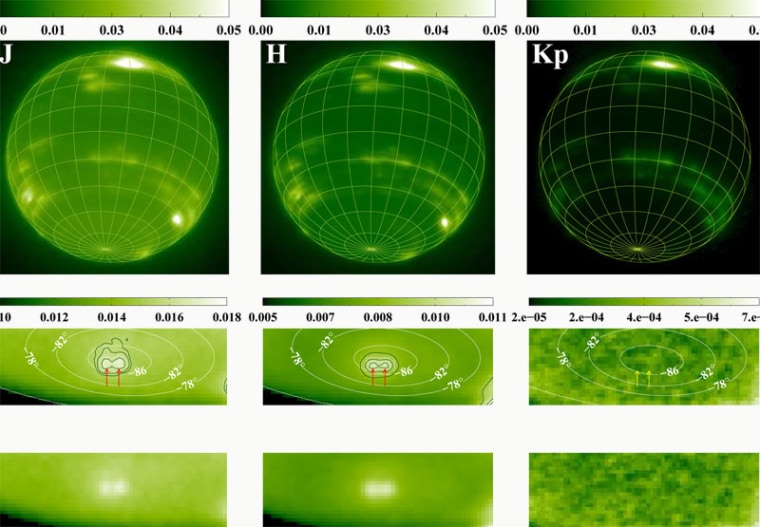A cloudy patch that is typically seen over the south pole of Neptune was spotted in double by astronomers after it briefly split in two, as viewed by ground-based telescopes in 2007.
The cloud feature has been seen near Neptune's south pole since the Voyager 2 spacecraft visited the planet in the late 1980s. But what exactly it was and what processes on the planet generated it weren't known then, as telescopes on Earth can't see Neptune well enough to resolve such small features.
"What we knew about it was that there was a spot," said Mate Ádámkovics, a researcher at the University of California, Berkeley and a member of the team that made the new observations.
In 2007, measurements indicated that the atmosphere at the pole was warmer than those at other latitudes, which suggested that the feature near Neptune's pole could be similar to the persistent storm seen over Saturn's south pole. Saturn's polar vortex seems to be a much larger version of hurricanes on Earth, only stationary. Like a hurricane, that polar vortex features a calm eye surrounded by a wall of bright clouds.
From July 26 to 28, 2007, a team of astronomers observed Neptune with the 10-meter Keck II telescope atop Mauna Kea, Hawaii. The observations from July 26 showed two distinct features near Neptune's south pole, not one. But on the 28th, there was only a single cloud feature again.
The team analyzed the observations and determined that the double cloud feature changing was real, and not just a case of low resolution seeing what was really two clouds as one.
The finding, detailed in a paper accepted to the journal Icarus and posted as a pre-print paper to the online site arXiv, suggests that the cloud feature sits in a regions of strong convection, or overturning layers of the atmosphere. The observation is another piece of evidence suggesting a similarity between the polar atmosphere of Neptune and that of Saturn, Ádámkovics told SPACE.com.
To really find out details about the cloud feature though, a spacecraft would have to fly to Neptune and take more close-up pictures, Ádámkovics added. The team does plan to apply for more telescope time to see if they can catch the cloud splitting again though.
Understanding the dynamics that cause the cloud feature on Neptune and how they relate to those on Saturn doesn't just help in our quest to better know our own solar system.
Because most of the extrasolar planets that have been found so far are also gas giants, investigating the planets in our solar system directly impacts our understanding of those in other systems, Ádámkovics said.
